In the stormy east-wind straining,
The pale yellow woods were waning,
The broad stream in his banks complaining.
Heavily the low sky raining
Over tower'd Camelot;
Down she came and found a boat
Beneath a willow left afloat,
And around about the prow she wrote
The Lady of Shalott.
And down the river's dim expanse
Like some bold seer in a trance,
Seeing all his own mischance -
With a glassy countenance
Did she look to Camelot.
And at the closing of the day
She loosed the chain, and down she lay;
The broad stream bore her far away,
The Lady of Shalott.
An excerpt from the poem 'The Lady Of Shalott' by Alfred, Lord Tennyson
'seer' a visionary: a person with unusual powers of foresight.
Pre Raphaelite Movement - A link to Wikipedia ... ♥








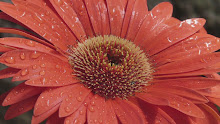
















































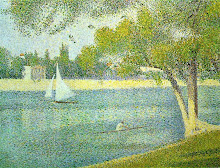





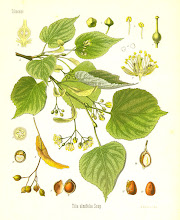



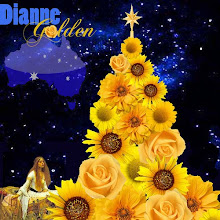
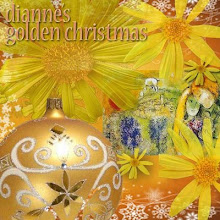









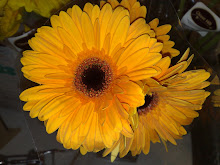
19 comments:
that first waterhouse ophelia is terrific -reminds me of corot the way he painted landscape. i like the lady in water too. all very lovely.
these are all very lovely paintings. they appeal to the girl that still resides within me. they have this fairly tale quality about them. i like the 1st waterhouse ophelia probably the best.
Yes dear K9 there are some which stand out more than others but I find they all have their beauty; the first Ophelia, I love her face abd the folds in her gown, the detail of Ophelia in the water and I just love Vanity.
It could be a photograph, the beauty of her satin skin and dainty fingers, the pearls and jewels, the sumptuous clothes and her hair looks like silk...very beautiful and a skilled painter. ♡
Thanks dear Foamy
they appeal to me in that way as well, like Rapunzel and her golden hair, Princesses and Princes,
Guinevere and Lancelot, the romantic and the tragic as in the sad ending for Ophelia and The Lady of Shalott...and poor Guinivere came to a ghastly end because of her adulterous ways.
I think there is some beauty in all, but my favourite would have to be Vanity, for it is a truly beautiful painting for all of the reasons I have mentioned to K9. ♡
Love your choice of images and thoughts. You might enjoy my blog. Please stop by if you have a moment.
-Painter
http://betweendreamsanddaylight.blogspot.com/
The death of Ophelia at the Tate Britain on the north bank of the River Thames, London: I used to sit on a bench in Room 14 staring at this painting. It was recently moved with the other PRB paintings to Room 1. The intense & full colours as well as the fine detail of the PRB's paintings have really got to be seen close-up.
The PRB could paint very well, as opposed to the modern concept of art where often a large decorator's paintbrush is thrust into five large cans of paint, vigourously scrubbed around a canvas for 10 minutes or so & then sold for a million pounds. I'm exaggerating; it's normally 5 minutes...!
The PRB's paintings have got to be looked closely to decipher the codes that the PRB painter often used - a mouse barely visible behind a table leg, a handful of golden leaves blown in through the door, a ruffled scrap of silk in the dark shadow. The Hireling Shepherd painted by William Holman Hunt in 1851 & hung at the Manchester Art Gallery appears first to the eye as a shepherd courting a young lady; then you notice the sour apples the lamb is eating; then you notice the sheep have burst their bounds & one is entering the corn on the right, etc.
When it was first exhibited at the Royal Academy in London, the caption had 4 lines from Act II, Scene VI of King Lear:
‘Sleepeth or waketh thou, jolly shepherd?
Thy sheep be in the corn;
And for one blast of thy minikin mouth,
Thy sheep shall take no harm.’
To understand what Hunt was trying to portray by means of his painting, one needs to read the comments from a letter written by Hunt himself:
‘Shakespeare's song represents a Shepherd who is neglecting his real duty of guarding the sheep: instead of using his voice in truthfully performing his duty, he is using his "minikin mouth" in some idle way. He was a type thus of other muddle headed pastors who instead of performing their services to their flock--which is in constant peril--discuss vain questions of no value to any human soul. My fool has found a death's head moth, & this fills his little mind with forebodings of evil and he takes it to an equally sage counsellor for her opinion. She scorns his anxiety from ignorance rather than profundity, but only the more distracts his faithfulness: while she feeds her lamb with sour apples his sheep have burst bounds and got into the corn. It is not merely that the wheat will be spoilt, but in eating it the sheep are doomed to destruction from becoming what farmers call "blown". ’
Hence, Hunt was showing in this painting his concern with the church pastors of his day. Perhaps, a related question could be asked today: Do we associate the 'church' with the preaching of the spiritual message that Jesus spoke about in the Bible; ie: the 'Kingdom Of God' mentioned in the Lord's Prayer (‘Let your kingdom come’) as the genuine solution for mankind's problems or do we associate it rather with social reform programs, community aid, charity work in 3rd world countries, raising money for good causes, etc?
I haven't got an answer; just thinking aloud as William Holman Hunt did.
Incidentally, the eyelashes on The Hireling Shepherd painting look like they were accomplished with a single hair of a brush. I can't imagine how one can balance paint on a single hair but they managed it!
I hope my comment has not sent any of your readers to sleep, Dianne!
I forgot to mention that William Holman Hunt took John 10:12,13 for the theme of the painting The Hireling Shepherd:
‘The hired man, who is no shepherd and to whom the sheep do not belong as his own, beholds the wolf coming and abandons the sheep and flees—and the wolf snatches them and scatters them, because he is a hired man and does not care for the sheep.’
I read lots of books, Dianne, the Bible is just one of them; much neglected reading these days in my opinion. I read Proverbs from beginning to end a few months ago & I couldn't believe what a thinking person Solomon really was. It's evident that he had spent a good old time thinking about things. Have a very good evening.
Thank you painter
for your lovely comment, I have had a very quick look at your blog and I will return...I love the title 'between dreams and daylight', that is where I spend a lot of my thoughts. :)
I see you have some beautiful sketches by J W Waterhouse and I also love the cello. ♡
Thank you dear Alexander , you have given me much to read.
I know that you are an educated man, well read and travelled I would suppose, I wondered in my question last night if you were a member of the clergy.
I remember something you had written at 'Nature Diary' saying that your life was unremarkable ...from my perception I would say that it is far from that.
How wonderful to visit the Tate and be able to see so many beautiful works of art.
Yes the more one looks at these paintings the more I see, I really love the detail in Ophelia, the one by Millais, she is holding up her hands resigning her broken heart and fate to that of the water...just waiting for death to release her from her heartache.
I read somewhere that Ophelia,by Waterhouse is sitting by the water prepapring herself for death, the golden belt that she wears is supposedly symbolic of her purity.
Have you studied the detail in Vanity, so life like, such natural skin tones, I think it is beautiful.
I have seen The Lady of Shalott by Holman Hunt, she is caught up in her tapestry threads and by seeing her red crossed knight, Sir Lancelot she becomes aware as a woman and wishes no more to be imprisoned and her world unravels just like the threads in the tapestry in which she is entangled.
Both the poem and the painting are very symbolic.
"She left the web, she left the loom,
She made three paces through the room,
She saw the water-lily bloom,
She saw the helmet and the plume,
She look'd down to Camelot.
Out flew the web and floated wide;
The mirror crack'd from side to side;
"The curse is come upon me," cried
The Lady of Shalott."
Thank you I wasn't aware of 'The Hireling Shepherd', it is a very lovely painting, so much to see there, no the shepherd is not paying attention to his flock he is letting himself be distracted by the young woman. The colours in this are vibrant, the trees in the background, the stream where her feet are placed,the corn field, the green of the pasture and of course the apples which are starting to ferment would cause bloat in the sheep.
I did not realise the paintings by the Pre Raphaelite Brotherhood were so symbolic.
Are you still with me, or have you fallen asleep? :)
On awakening Alexander, have a lovely Tuesday. ♡
Very evocative. Tempts me to return to an earlier project to write of the seven deadly sins, for some reason.
Probably the title of the first painting sent my mind off in that direction. Even though vanity is not strictly one of the magnificent seven.
Thank you dear J Cosmo ...the 'seven deadly sins'?, with your talent for poetry I know you would write them well, but what of the 'seven heavenly virtues', perhaps another temptation? :) ♡
'Vanity', yes the first painting,I think it is a beautiful painting and yes though it is not one of the 'seven', I still think it is considered an unwanted personality trait. ♡
This reminds me of just how wrong it is to ban certain nameless pugs from libraries simply for the following banter:
Pug to Librarian: "What was the name of Hamlet's sweetheart?"
Librarian: "Ohphelia."
Pug to Librarian: "Oh, please do. It's been many a fortnight."
Oh Puggles my sweet
are you really banned from the library?
That is terrible and for asking such an innocent question...hmmm, maybe you should have left off the reply, some of these librarians are a little prudish.
Only a fortnight? Well I guess that is a long time for a sexual being such as yourself. :-) ♡
Thanks for stopping by, I have missed you.
Dianne, thank you for posting these beautiful pre-raphaelite pictures. I am such a huge fan of John Waterhouse and have had many prints up on my walls.
As the years have gone by, the pictures have faded and been taken down only to be replaced by more modern works.
You have brought back some fond memories, houses I have lived in, times I had forgotten and my love for pre=raphaelite pictures.
I used to have "The Lady of Shallot" hanging in my bathroom and loved the poem.
You have inspired me to go and dig out the poem and read it again, such a tragic story,but a beautiful poem.
Thank you xxx
Thank you Carol dear for such a lovely comment, I'm pleased that by posting these paintings that I could bring back some happy memories for you.
Like you I have had many Waterhouse prints over the years, some are such romantic subjects but not all as in some cases the heroines have tragic endings.
I have a print of 'The Lady of Shalott' hanging in my bedroom plus another Arthurian styled print which is called 'The Accolade', a romantic and feminine bedroom which is referred to as 'The Virgin Bedroom', :) for that is what it is, no man has ever been invited there....sadly. ♡
I love Tennyson's poem and I have added a link here for you as Canadian singer Loreena McKennitt has put the poem to music and I thought you might enjoy her singing; she has done this with 'The Highwayman' by Alfred Noyes and also 'The Two Trees' by William Butler Yeates which I would highly recommend you listen to. ♡
Wonderful. Waterhouse is my favorite artist. His art is breathtaking. Thanks for the post!
Sorry Jessica but I accidently deleted my original reply to your comment whilst removing the spam comments.
Thanks, yes, Waterhouse is one of my favourite painters, he captured the expression and emotion of his subjects so beautifully. xoxo ♡
Post a Comment